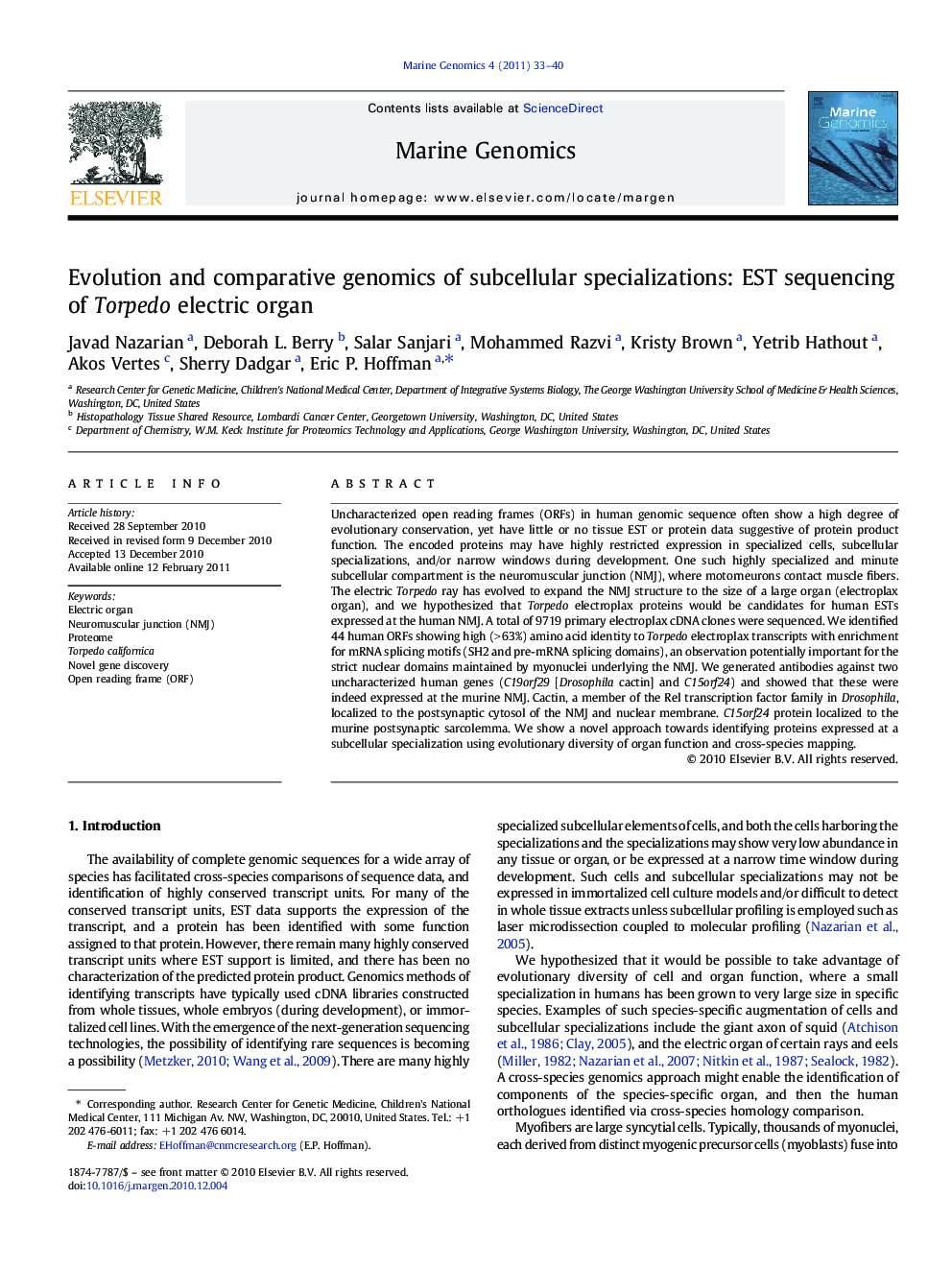| کد مقاله | کد نشریه | سال انتشار | مقاله انگلیسی | نسخه تمام متن |
|---|---|---|---|---|
| 2058243 | 1076213 | 2011 | 8 صفحه PDF | دانلود رایگان |

Uncharacterized open reading frames (ORFs) in human genomic sequence often show a high degree of evolutionary conservation, yet have little or no tissue EST or protein data suggestive of protein product function. The encoded proteins may have highly restricted expression in specialized cells, subcellular specializations, and/or narrow windows during development. One such highly specialized and minute subcellular compartment is the neuromuscular junction (NMJ), where motorneurons contact muscle fibers. The electric Torpedo ray has evolved to expand the NMJ structure to the size of a large organ (electroplax organ), and we hypothesized that Torpedo electroplax proteins would be candidates for human ESTs expressed at the human NMJ. A total of 9719 primary electroplax cDNA clones were sequenced. We identified 44 human ORFs showing high (> 63%) amino acid identity to Torpedo electroplax transcripts with enrichment for mRNA splicing motifs (SH2 and pre-mRNA splicing domains), an observation potentially important for the strict nuclear domains maintained by myonuclei underlying the NMJ. We generated antibodies against two uncharacterized human genes (C19orf29 [Drosophila cactin] and C15orf24) and showed that these were indeed expressed at the murine NMJ. Cactin, a member of the Rel transcription factor family in Drosophila, localized to the postsynaptic cytosol of the NMJ and nuclear membrane. C15orf24 protein localized to the murine postsynaptic sarcolemma. We show a novel approach towards identifying proteins expressed at a subcellular specialization using evolutionary diversity of organ function and cross-species mapping.
Research Highlights
► The amount of whole genome sequencing of many species is expanding rapidly.
► We studied an example of relatively extreme evolution, the Torpedo electric organ.
► We describe the sequencing of 9,719 cDNA clones from the Torpedo electric organ.
► EST resource was used to identify 2 candidates for mammalian neuromuscular junction.
► Antibodies to proteins encoded by these ESTs labeled murine neuromuscular junctions.
Journal: Marine Genomics - Volume 4, Issue 1, March 2011, Pages 33–40